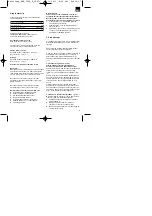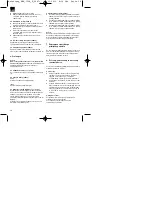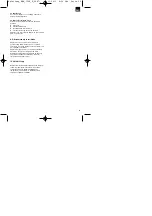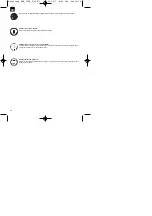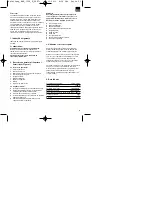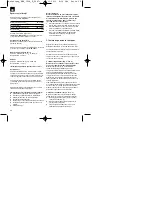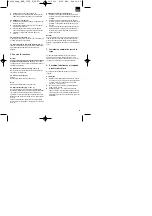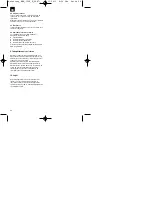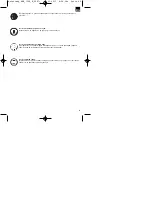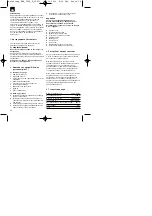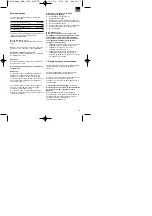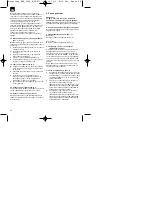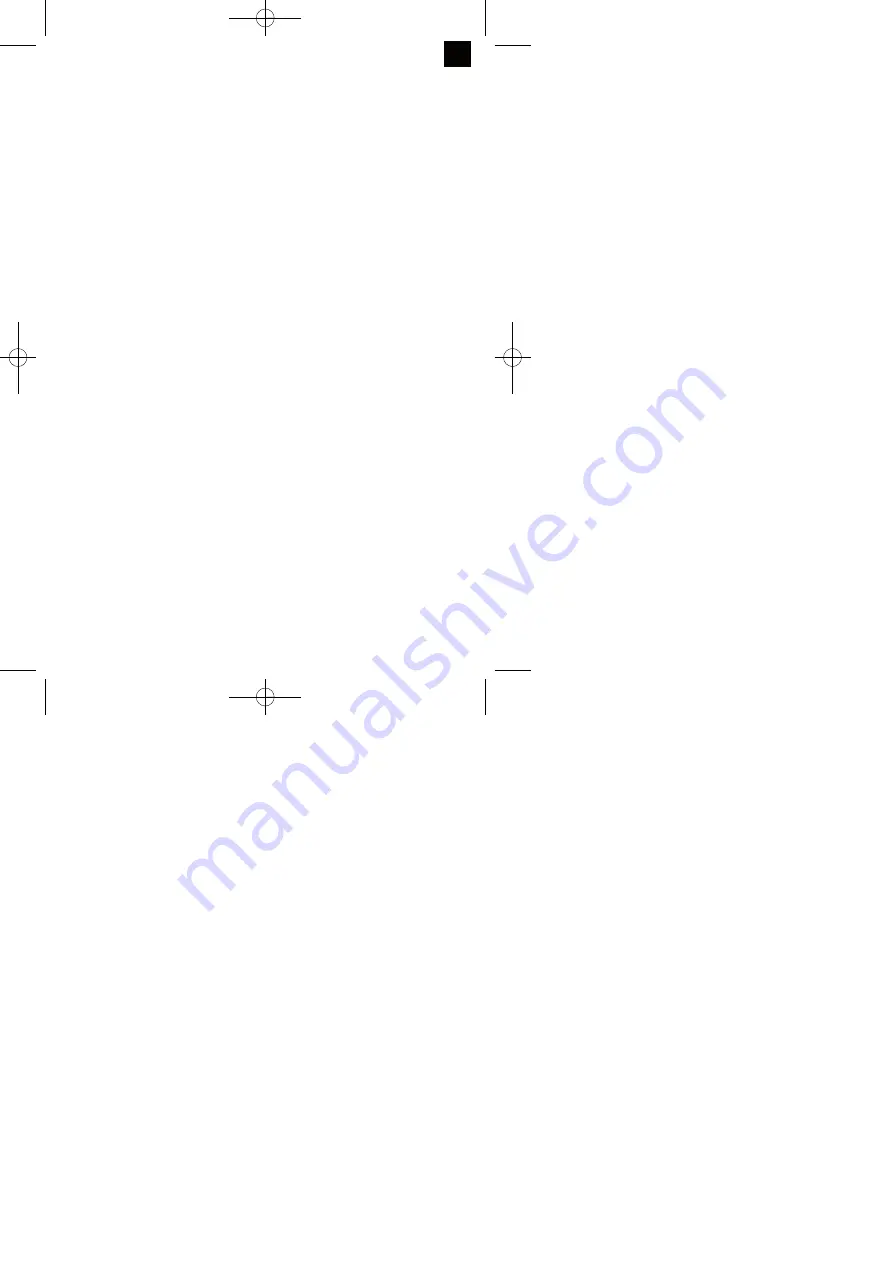
GB
13
Retighten the locking screw (a).
Now drill the hole until the depth stop (7) touches
the workpiece.
5.3. Tool insertion (Fig. 4)
Clean the tool before insertion and apply a thin
coating of drill bit grease to the shaft of the tool.
Pull back and hold the locking sleeve (2).
Insert the dust-free tool into the tool mounting as
far as it will go whilst turning it. The tool will lock
itself.
Check that it is properly secure by pulling the
tool.
5.4 Tool removal (Fig. 5)
Pull back and hold the locking sleeve (2) and remove
the tool.
5.5 Dust collection device (Fig. 6)
Slide the dust collection device (a) over the drill bit
before carrying out any hammer drilling vertically
above your head.
6. Starting up
Important.
To prevent all danger, the machine must only be
held using the two handles (6/8).
Otherwise there
may be a risk of suffering an electric shock if you drill
into cables.
6.1 Status indicator (Fig. 1/Item 9)
The status indicator (9) lights up when the power
plug is connected.
6.2 Switching on and off (Fig. 1)
To switch on:
Press the control switch (4).
To switch off:
Release the control switch (4).
6.3 Speed controller (Fig. 1/Item 5)
You can use the speed controller (5) to pre-select the
required speed of rotation and blow rate. Turn the
speed controller (5) in the PLUS direction to increase
the speed of rotation and blow rate, or turn the speed
controller in the MINUS direction to reduce the speed
of rotation and blow rate.
The most suitable speed of rotation and blow rate
depend on the particular material and working
conditions.
6.4 Rotation stop facility (Fig. 7)
For hammer drilling, press the button (E) on the
rotary switch (3) and simultaneously turn the
rotary switch (3) to position A.
For chiseling, press the button (E) on the rotary
switch (3) and simultaneously turn the rotary
switch (3) to position B. In switch position B the
chisel is not locked.
For chiseling, press the button (E) on the rotary
switch (3) and simultaneously turn the rotary
switch (3) to position C. The chisel is locked in
position C.
Important.
Only low pressure is required for hammer drilling.
Excessive pressure will exert an unnecessary force
on the motor. Check the drill bits at regular intervals.
Sharpen or replace blunt drill bits.
7. Replacing the power cable
If the power cable for this equipment is damaged, it
must be replaced by the manufacturer or its after-
sales service or similarly trained personnel to avoid
danger.
8. Cleaning, maintenance and
ordering of spare parts
Always pull out the mains power plug before starting
any cleaning work.
8.1 Cleaning
Keep all safety devices, air vents and the motor
housing free of dirt and dust as far as possible.
Wipe the equipment with a clean cloth or blow it
with compressed air at low pressure.
We recommend that you clean the device
immediately each time you have finished using it.
Clean the equipment regularly with a moist cloth
and some soft soap. Do not use cleaning agents
or solvents; these could attack the plastic parts
of the equipment. Ensure that no water can seep
into the device.
8.2 Carbon brushes
In case of excessive sparking, have the carbon
brushes checked only by a qualified electrician.
Important! The carbon brushes should not be
replaced by anyone but a qualified electrician.
Anleitung_BRH_1208_E_SPK7:_ 14.11.2011 8:36 Uhr Seite 13
Summary of Contents for 42.584.95
Page 3: ...3 1 2 3 3 7 4 2 1 8 6 9 5 6 a 7 6 Anleitung_BRH_1208_E_SPK7 _ 14 11 2011 8 36 Uhr Seite 3...
Page 4: ...4 4 6 7 5 B A 3 C E a 2 2 Anleitung_BRH_1208_E_SPK7 _ 14 11 2011 8 36 Uhr Seite 4...
Page 25: ...25 BG Anleitung_BRH_1208_E_SPK7 _ 14 11 2011 8 36 Uhr Seite 25...
Page 30: ...30 GR Anleitung_BRH_1208_E_SPK7 _ 14 11 2011 8 36 Uhr Seite 30...
Page 40: ...40 Anleitung_BRH_1208_E_SPK7 _ 14 11 2011 8 36 Uhr Seite 40...
Page 41: ...41 Anleitung_BRH_1208_E_SPK7 _ 14 11 2011 8 36 Uhr Seite 41...
Page 45: ...45 e 1 2 12 3 2 4 Anleitung_BRH_1208_E_SPK7 _ 14 11 2011 8 36 Uhr Seite 45...
Page 46: ...46 z 1 2 12 3 2 4 Anleitung_BRH_1208_E_SPK7 _ 14 11 2011 8 36 Uhr Seite 46...

















